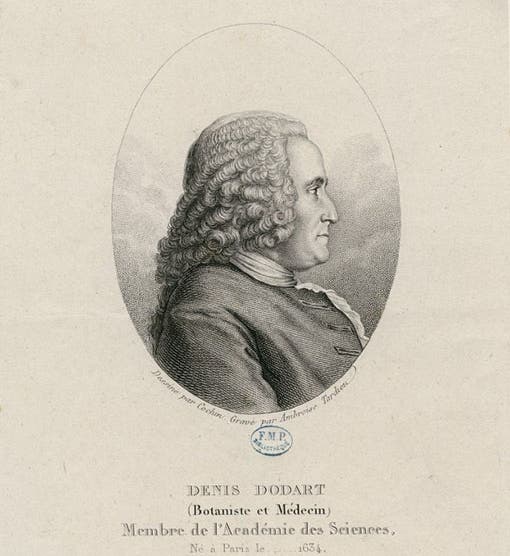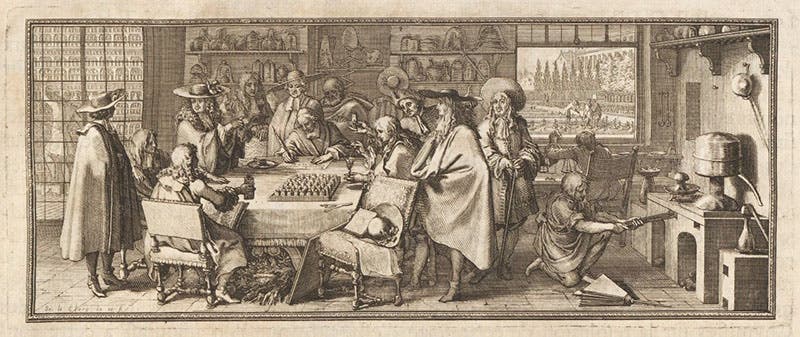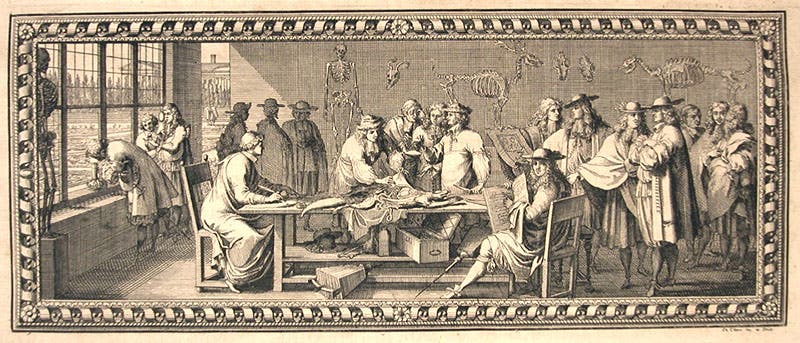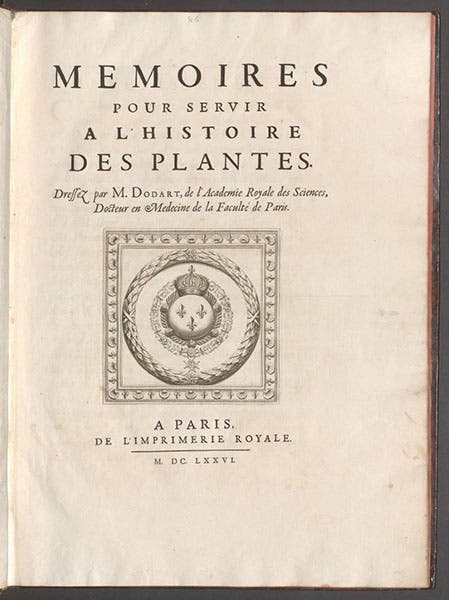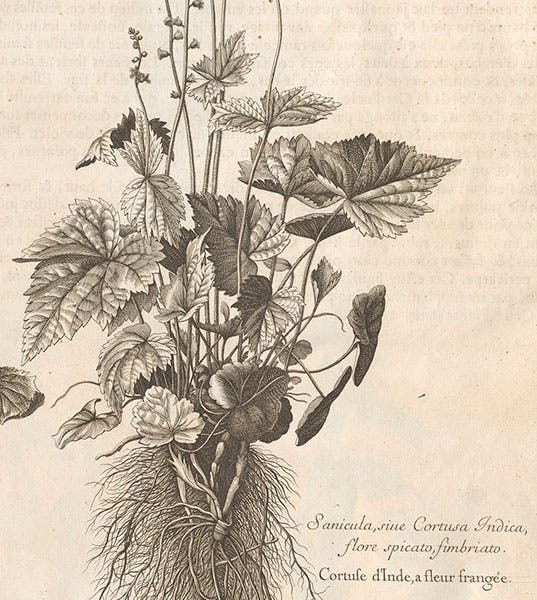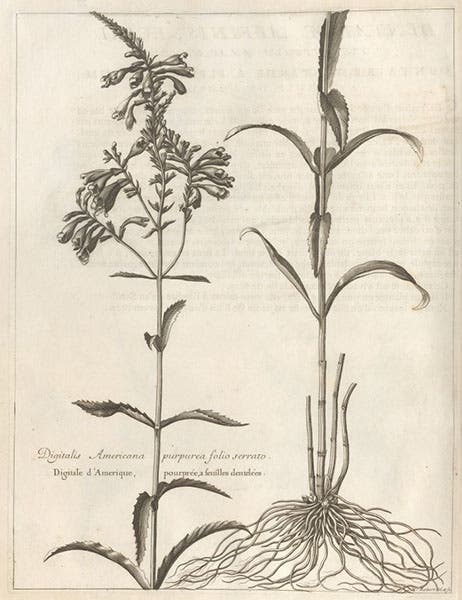Scientist of the Day - Denis Dodart
Denis Dodart, a French physician and botanist, died Nov. 5, 1707; he was born sometime in 1634. In 1671, Dodart was invited to join the Royal Academy of Sciences in Paris. He was sponsored by Charles Perrault, a good friend and fellow physician, and a charter member of the Academy since its founding in 1666. Perrault had undertaken to oversee two projects of the Academy: a natural history of animals, and a natural history of plants. Perrault himself took charge of the natural history of animals, which was focused on comparative anatomy, and published a Mémoires pour servir a l’histoire naturelle des animaux in 1676 (see our post on Perrault), but he sought help with the botanical side. In the late 1660s, the history of plants project was headed up by Samuel Cottereau Du Clos, a chemist. But Du Clos was in his 70s, and was not really moving things along, so Dodart was brought in by Perrault to help out. Dodart was young, smart, and ambitious, and he soon took over the botanical enterprise.
Dodart felt that botanical studies in his day were lagging far behind zoology. The number of plants known had tripled or more since 1600, and yet there had been no thorough botanical encyclopedias published since that of Gaspard Bauhin’s Pinax (1623), which was very traditional. Dodart had ambitions of the Academy publishing descriptions of every known plant, along with their chemical properties, arranged within a taxonomic system that could accommodate all this new knowledge. He published an introduction to what he had in mind in 1676, called Mémoires pour servir a l'Histoire des Plantes, which we have in our collections (fourth image, below).
It is interesting to compare the volumes of Dodart and Perrault. They are both large folios, elegantly printed, with similar title pages; both were published in 1676; both have an abundance of large engravings; both begin with engraved headpieces that present the botanists or anatomists at work in their laboratories. Since the two headpieces are rarely shown together, we do so here (second and third images, above).
Yet as much as the volumes appear to be a matched set, they are really quite different. Perrault’s Mémoires on animals was a finished work, at least with respect to the animals studied (they would study other animals in subsequent years, but they would never go back and reexamine the animals dissected and illustrated here). And the images were an integral part of the work, demonstrating that comparative anatomy is essential to natural history.
Dodart’s book, on the other hand, is a farago. In the first part of the work, the section that he wrote, Dodart explained the importance of chemical analysis for modern botany. He called for a detailed study of native French plants, putting aside those exotic plants from the Indies and the New World that so fascinated royal gardeners. Yet when we turn to the last half of the book, which contains the engravings, and which was compiled by the gardener, Nicolas Marchant, we find that almost all the plants described and depicted are exotic ones, and there is no mention of chemistry anywhere. Dodart had called for illustrations drawn from life, like those in Perrault’s Mémoires; these engravings, on the other hand, were based on watercolors in the collections of the Duke of Orléans, not intended for scientific purposes.
Even though the engravings in Dodart’s Mémoires were not his doing or according to his wishes, we show three of them anyway, since they are the most attractive feature of the book. We include the Clematis americana (fifth and sixth images), the Cortusa indica or Sanicula (seventh and eighth images), and the Digitalis americana (ninth image, below). These three were all engraved by Nicolas Robert, although some of the other engravings were executed by Abraham Bosse.
The natural history project of the Paris Academy, to which Dodart’s treatise was an introduction, remained unfulfilled. A large number of engravings were collected, and some of these where later published when the Academy was reorganized in 1699. But an exhaustive natural history of the plants of France never appeared, even though Dodart continued to work until his death in 1707.
Dr. William B. Ashworth, Jr., Consultant for the History of Science, Linda Hall Library and Associate Professor emeritus, Department of History, University of Missouri-Kansas City. Comments or corrections are welcome; please direct to ashworthw@umkc.edu.

